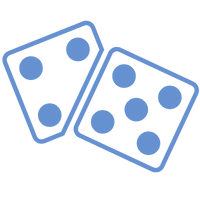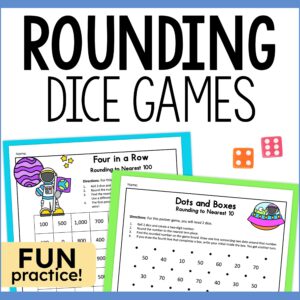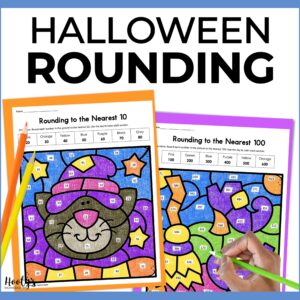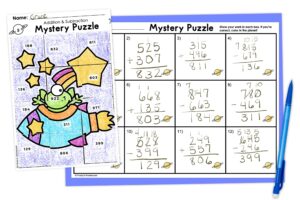Rounding numbers can be a challenge when it comes to teaching 3rd grade math. It’s a relatively straightforward skill for some students, while others find themselves grappling with the concept of rounding to the nearest 10 or 100. However, imagine if you possessed a magic wand capable of making rounding concepts crystal clear. With this magical tool in hand, you could effortlessly bridge the understanding gap and empower all your students to confidently master the art of rounding.

Visual Representation and Conceptual Understanding
We’ve all had those moments while teaching rounding numbers for the first time. We explained the process, threw in some catchy chants and songs, and decided the kids were ready to practice on their own, only to find them staring blankly at their papers. You thought they had it, but they don’t. What can you do to help them understand rounding? Enter the number line! Number lines are like magic wands that visually represent numbers and make rounding super easy to understand.
When you use a number line, students can see the relative positions of numbers and understand why a number gets rounded the way it does. Numbers are rounded to the 10 or 100 they are closest to. It’s as simple as marking a number on the line and moving along to determine the nearest 10 or 100. Number lines unlock the magic for visual learners!
Not only do number lines help students visualize rounding numbers, but they also help students develop a deeper conceptual understanding. They can see how numbers relate to one another and how rounding impacts their value. So, wave that number line wand and watch your students’ understanding soar!
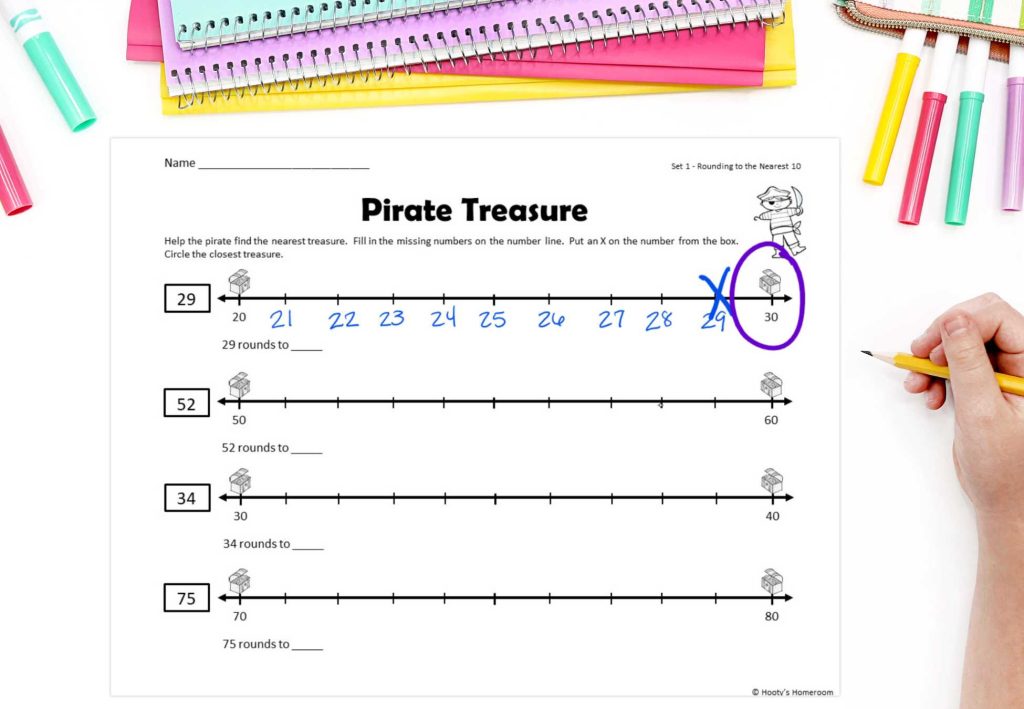
Concrete Practice and Engaged Learning
Let’s face it; math can sometimes feel like an abstract world of numbers that make no sense. Number lines simplify rounding to the nearest 10 or 100, making it a hands-on, engaging experience for your students.
Imagine your students holding a number line, actively participating in the rounding process. They can mark points on the line, hop along it, and physically interact with numbers. This concrete practice helps solidify their understanding of rounding to the nearest 10 or 100.
Not only is this hands-on approach more engaging, but it also allows students to develop a stronger number sense. They get to see and feel the numbers, understand their magnitude, and internalize the rounding process. You can make math accessible for all learners.
Differentiation and Personalized Instruction
We all know that students come in all shapes, sizes, and learning styles. What works for one may not work for another. That’s where number lines come to the rescue with their flexibility for differentiation and personalized instruction.
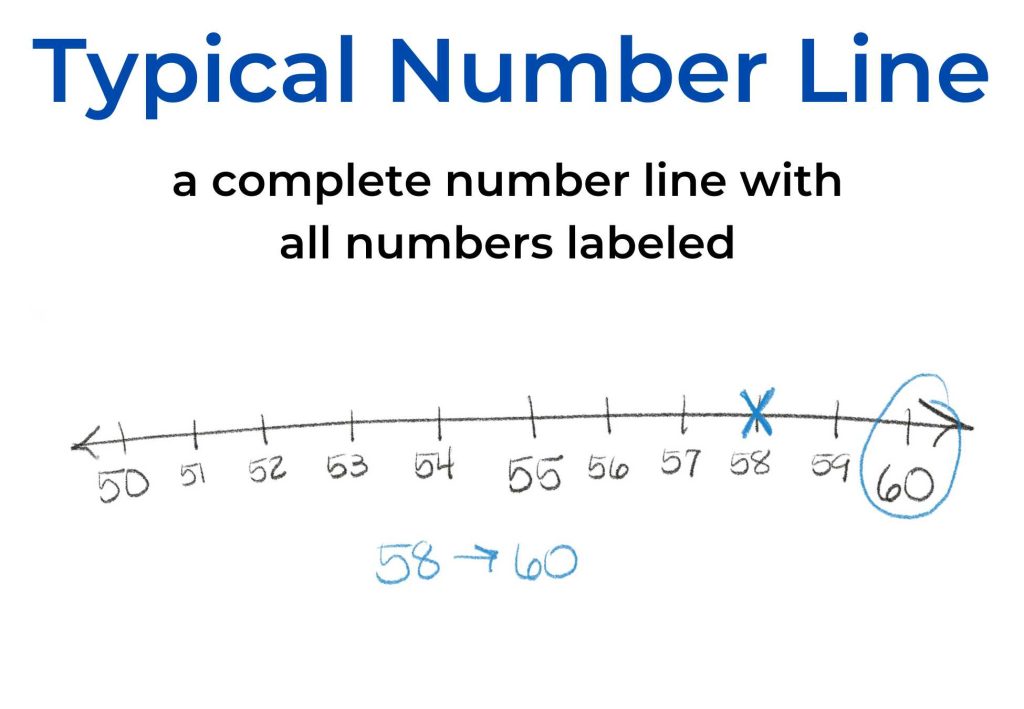
Number lines can be easily modified to meet the needs of different learners. For students who struggle with rounding to the nearest 10 or 100, give them number lines with the numbers already labeled, providing more guidance and support. On the flip side, give blank number lines to students who have strong number sense.
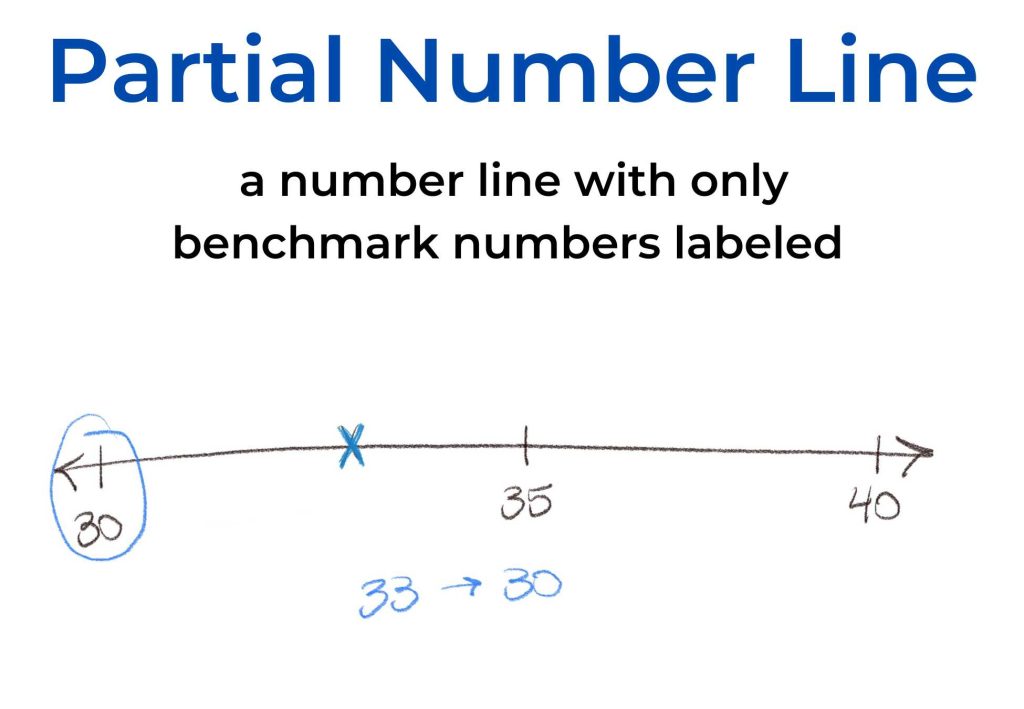
By using number lines, you’re offering multiple entry points for students of varying abilities. It’s like giving each student their own personalized math journey. So, get creative and tailor your number lines to create an inclusive and supportive learning environment.
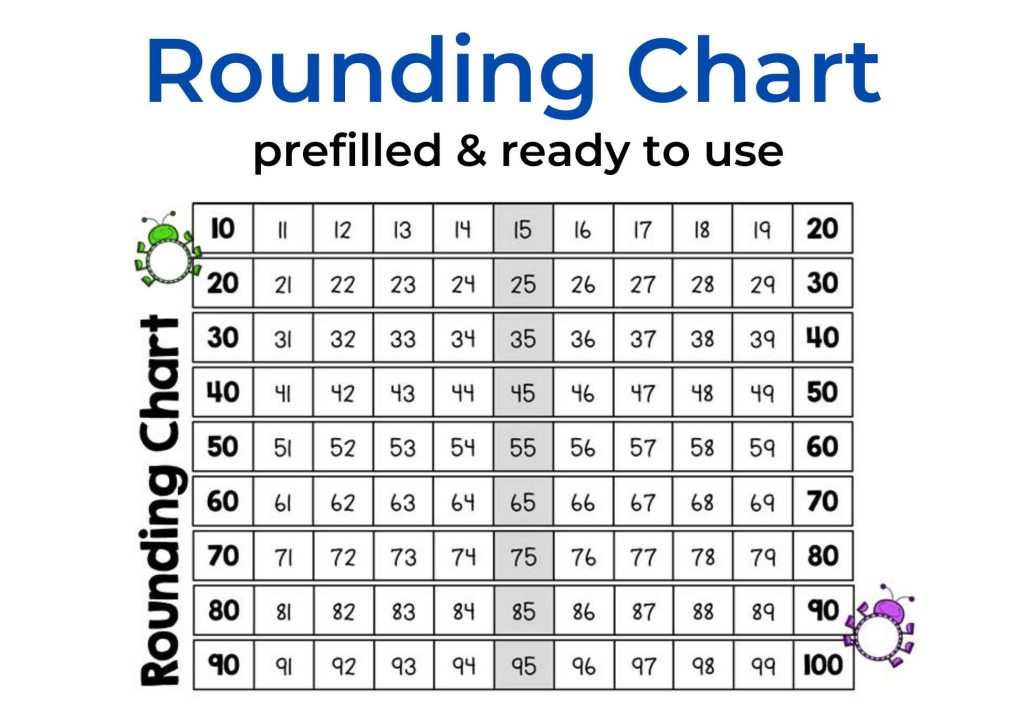
Number lines are a math teacher’s secret weapon when teaching elementary students how to round to the nearest 10 or 100. They provide a visual representation, promote conceptual understanding, offer concrete practice, and allow for differentiation. It’s a win-win situation for both you and your students.
So, go ahead and give number lines a shot in your classroom. See how they bring clarity, engagement, and differentiation to your rounding lessons. Your students will thank you for it, and you’ll become the math teacher with all the cool tricks up your sleeve!




